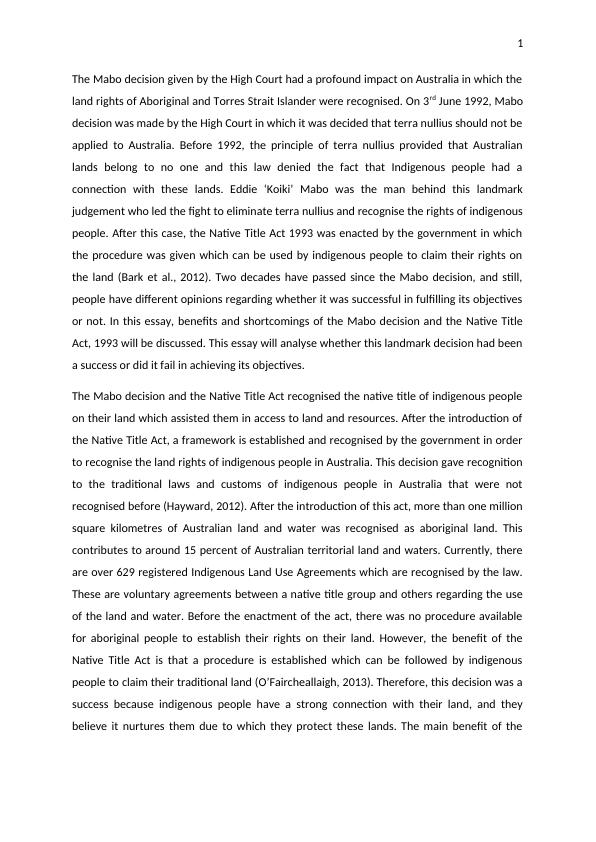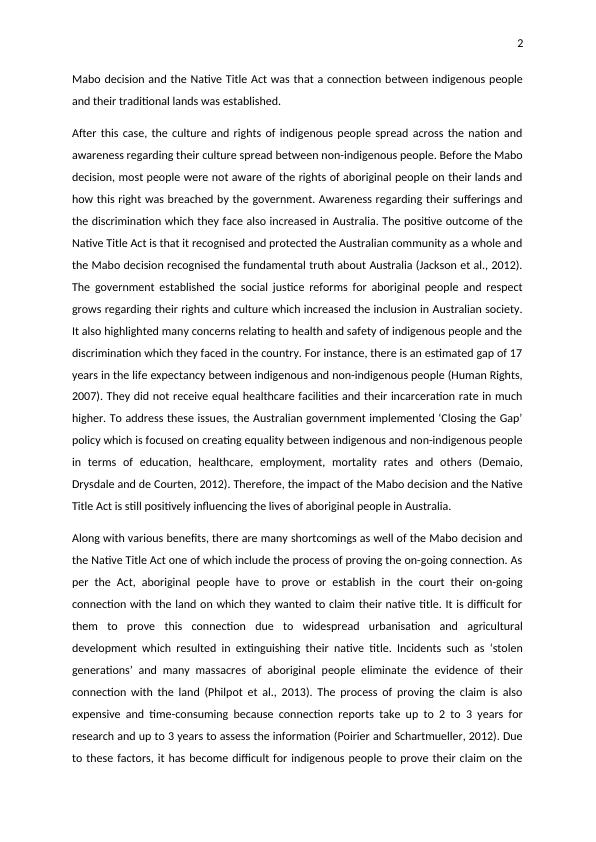The Mabo Decision and the Native Title Act: Benefits and Shortcomings
Demonstrate a sustained engagement with, and analysis of, questions and debates in Indigenous history and identity studies in Australia, assessing the benefits and shortcomings of the Mabo decision and the Native Title Act 1993 for Aboriginal communities.
7 Pages2142 Words269 Views
Added on 2023-06-03
About This Document
The Mabo decision given by the High Court had a profound impact on Australia in which the land rights of Aboriginal and Torres Strait Islander were recognised. On 3rd June 1992, Mabo decision was made by the High Court in which it was decided that terra nullius should not be applied to Australia. After this case, the Native Title Act 1993 was enacted by the government in which the procedure was given which can be used by indigenous people to claim their rights on the land. In this essay, benefits and shortcomings of the Mabo decision and the Native Title Act, 1993 will be discussed. This essay will analyse whether this landmark decision had been a success or did it fail in achieving its objectives.
The Mabo Decision and the Native Title Act: Benefits and Shortcomings
Demonstrate a sustained engagement with, and analysis of, questions and debates in Indigenous history and identity studies in Australia, assessing the benefits and shortcomings of the Mabo decision and the Native Title Act 1993 for Aboriginal communities.
Added on 2023-06-03
ShareRelated Documents
End of preview
Want to access all the pages? Upload your documents or become a member.
The Native Title Act: A Discussion
|10
|3702
|1
Mabo Case [No.2] and its Impact on the Australian Legal System
|10
|2094
|294
The Mabo v Queensland (No 2) Case
|10
|2044
|246
Business Law- Mabo Case (Doc)
|8
|2139
|250
The Native Title Act Research Paper 2022
|10
|2102
|32
Mabo and Others v Queensland (No.2) 1992 Incorporating the Native Title Act 1993 2 CONCLUSIONS 4 REFERENCES 5 INTRODUCTION
|7
|2092
|33



